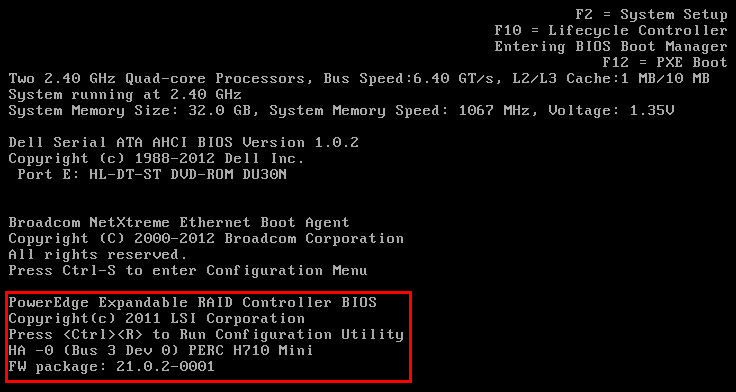
DELL PERC H200 710 DOWNLOAD

Download the P05 UEFI flasher for the LSI SAS 9211-8i and extract the file sas2flash.efi from EFI_Installer_P5.zip.Download the P07 firmware for the LSI SAS 9211-8i and extract the file 2118it.bin from 9211_8i_Package_For_P7_Firmware_BIOS_Upgrade_on_MSDOS_and_Windows.zip.Download the firmware for the Dell 6Gbps SAS HBA (this is a variant of the H200 with 8 external ports instead of 8 internal ports) and extract 6GBPSAS.FW from SASHBA_Firmware_6GBPS-SAS-HBA_07.03.06.00_A10_ZPE.exe.Please note that this operation is not supported by Dell or LSI, may void your warranty and could potentially damage the controller. Also, re-flashing allowed me to not flash a boot ROM to the card, speeding up the boot process of my server as my boot disk is connected to the Intel AHCI controller on the mainboard. The newer version also has the advantage that drives larger than 2TB are supported. Here’s how I upgraded my Dell PERC H200, which came with Dell’s A10 firmware (equivalent to LSI SAS 2008 P07 firmware), to LSI P20 firmware. However, they need to be flashed with a regular LSI firmware to disable their RAID capabilities in order to passthrough the drives directly to the OS.

Didn't have a chance to take a deeper dive in but it looks like a perfect fit for your setup to get some shared storage for clustering and high availability too.OEM version of the LSI SAS 9211-8i, such as the Dell H200, H310 or IBM M1015 are quite popular for use with FreeNAS. I was surprised to find out it's a linux-based virtual machine that has nice management capabilities not only the main product but also supports GUI for mdadm, zfs, lvm, inline deduplication and so on. If your servers are going to run a hypervisor you may play with Starwinds VSAN for vSphere.

Configured properly and having enough CPU and RAM resources it might perform even better than hardware RAID in some scenarios.
DELL PERC H200 710 SOFTWARE
There is nothing wrong with doing a software RAID using mdadm. The third option is the RAID adapter which again allows you connecting either SATA or SAS drives as a single virtual namespace combining the drives using various algorithms depending on what you need more - redundancy or performance.

HBA is usually required by various software-defined storage stacks like VMware vSAN or Storage Spaces Direct in order to work correctly since what they usually do on top is a software RAID. The next option is HBA (Host Bus Adapter) which allows you connecting either SATA or SAS drives as separate devices. In order to connect your disks to the motherboard, you need enough onboard SATA or SAS ports which is a rare case.


 0 kommentar(er)
0 kommentar(er)
